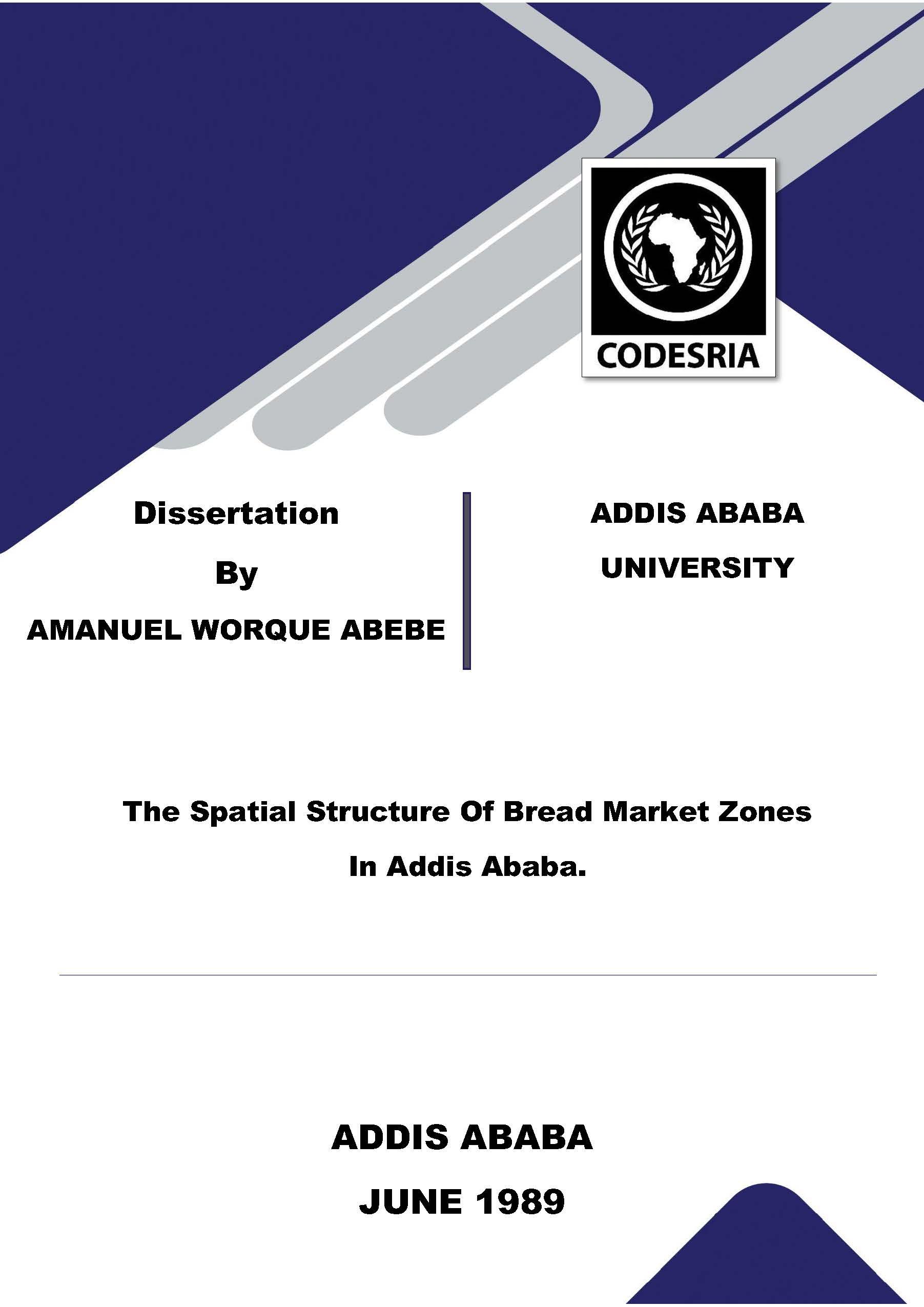The Spatial Structure Of Bread Market Zones In Addis Ababa. ADDIS ABABA JUNE
Keywords:
research, focuses, economic, geography, bread, ,marketing, componentsSynopsis
The research focuses on the economic geography of the major components of the new bread marketing system introduced in 1984/85 in Addis Ababa. The major components are the bread production, consumption and tran port systems. Spatial and temporal analysis of these components,,using elght hypotheses to try ta achieve the researcher's objectives has been conducted using the methods outlined in Chapter II. The data employed were derived from primary sources The mean-field concept is used to derive an index.fi,, that describes consumption conditions within the bread market zones by relating aggregate volumes of haul of bread to aggregate transportation costs. The highest values for ,suggesting zones with relatively optimal bakery and bread shops locations, are found for Kefetegnas 9,5,6,7,1 and 14. The results of the nearest
neighbour index for bakeries, bread shops tend to confirm that most of these Kefetegnas approach the optimal uniform pattern. The Kefetegnas with the least favourable bread supply situations are The trend in bread production capacity and bread output in the 1980's in Addis shows·that the share of public bakeri s has been growing more than the others, notably the private bakeries, which have declined in importance since 1982/83. Input material for breàd making are in short
supply and bread supply is less than the assigned quota in most Kefetegnas. The demand for bread in the city does not exceed the attainable capacity of existing bakeries, hence, the establishment of additional bake ies is not justified. Rather the flour
mills in Addis Ababa and in Ethiopia in general need replacement/modernization. high degree of association between the size on Kebele level. The amount of is, however, less than indicated by Consumers and bakery operators were found to be very critical about the poor handling and unhygienic condition related to bread transportation from bakeries. The researcher's attitudes survey of 440 households revealed that the upper incarne groups spend more on bread on annual basis, but during the wet season the low-income people spend more on bread. Bread consumption by low incarne consumers seems to be
mainly attributable to its low price, rather than to discriminatory quota allocations by the new distribution system.
Downloads






